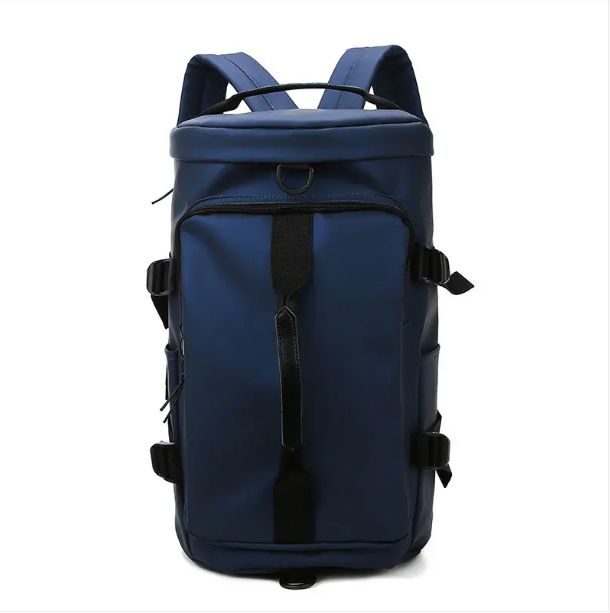
Usually when we buy a backpack, the description of the fabric on the manual is not very detailed. It will only say CORDURA or HD, which is only a weaving method, but the detailed description should be: Material + Fiber Degree + Weaving Method. For example: N. 1000D CORDURA, which means it’s a 1000D nylon CORDURA material. Many people think that the “D” in woven material stands for density. This is not true, “D” is the abbreviation of denier, which is the unit of measurement of fiber. It is calculated as 1 gram of denier per 9,000 meters of thread, so the smaller the number before D, the thinner the thread and the less dense it is. For example, 210 denier polyester has a very fine grain and is usually used as the lining or compartment of the bag. The 600 denier polyester has a thicker grain and thicker thread, which is very durable and is generally used as the bottom of the bag.
First of all, the material generally used in the bag on the raw material of the fabric is nylon and polyester, occasionally also use two kinds of material mixed together. These two kinds of material are made from petroleum refining, nylon is a little bit better than the quality of polyester, the price is also more expensive. In terms of fabric, nylon is more softer.
OXFORD
Oxford’s warp consists of two strands of threads woven around each other, and the weft threads are relatively thick. The weaving method is very common, the fiber degree is generally 210D, 420D. The back is coated. It is used as lining or compartment for bags.
KODRA
KODRA is a fabric made in Korea. It can replace CORDURA to some extent. It is said that the inventor of this fabric tried to find out how to spin CORDURA, but in the end he failed and invented a new fabric instead, which is KODRA. This fabric is also normally made of nylon, and is also based on fiber strength, such as 600d fabric. The back is coated, similar to CORDURA.
HD
HD is short for High Density. The fabric is similar to Oxford, the fiber degree is 210D, 420D, usually used as a lining for bags or compartments. The back is coated.
R/S
R/S is short for Rip Stop. This fabric is nylon with small squares. It is tougher than regular nylon and thicker threads are used on the outside of the squares on the fabric. It can be used as the main material of a backpack. The back is also coated.
Dobby
The fabric of Dobby seems to be composed of a lot of very small plaids, but if you look closely, you will find that it is made of two kinds of threads, one thick and one thin, with different patterns on the front side and the other side. It is seldom coated. It is much less strong than CORDURA, and is commonly only used in casual bags or travel bags. It is not used in hiking bags or duffle bag for camping.
VELOCITY
VELOCITY is also a kind of nylon fabric. It has high strength. This fabric is generally used in hiking bags. It is coated on the back and is available in 420D or higher strength. The front of the fabric looks very similar to Dobby
TAFFETA
TAFFETA is a very thin coated fabric, some coated more than once, so it is more waterproof. It is not usually used as the main fabric of a backpack, but only as a rain jacket, or a rain cover for a backpack.
AIR MESH
Air mesh is different from ordinary mesh. There is a gap between the mesh surface and the material underneath. And it is this kind of gap makes it has good ventilation performance, so it is normally used as a carrier or back panel.
1. Polyester
Features with good breathability and moisture. There are also strong resistance to acid and alkali, ultraviolet resistance.
2. Spandex
It has the advantage of high elasticity and stretch and good recovery. Heat resistance is poor. Often used as auxiliary materials and other materials blended together.
3. Nylon
High strength, high abrasion resistance, high chemical resistance and good resistance to deformation and aging. The disadvantage is that the feel is harder.
Post time: Dec-04-2023
